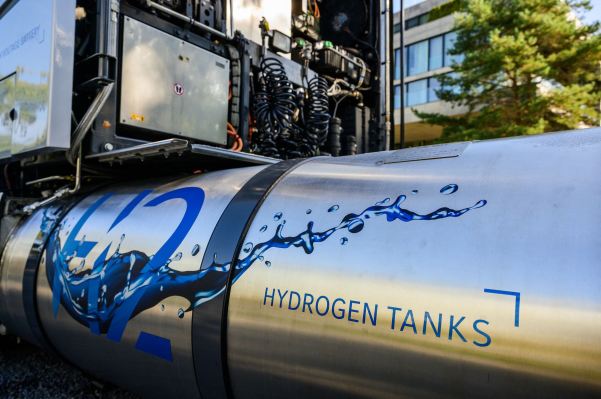Hydrogen suffers from the classic chicken-and-egg problem: There’s not enough demand to coax suppliers into the game, and there’s not enough supply to facilitate sufficient demand.
One startup thinks it has a solution for both sides.
Chicago-based Celadyne has developed a nanoparticle coating that can be applied to existing fuel cell and electrolyzer membranes. The material could drastically improve the durability of existing fuel cell designs while also improving the efficiency of hydrogen production by 15% to 20%, said Gary Ong, the company’s founder and CEO.
Celadyne recently raised a $4.5 million seed round, TechCrunch has exclusively learned. The round was led by Dynamo Ventures and Maniv with participation from EPS Ventures. The funding will be used for manufacturing more of the material so the company can run more tests to prove its durability and efficiency.
As Ong was working through his early business plans, he heard from some experts who argued in favor of tackling the demand side first while others advocated for the supply side.
“The truth of the matter is that it’s actually both,” Ong told TechCrunch. “We think that hydrogen needs to happen for industrial decarbonization, and we’re really worried that everyone else is tackling one side of the problem, not the other side.”
To make hydrogen to use it, engineers run the same basic chemical reaction in one direction or another. Run it one way, and you use electricity to produce hydrogen and oxygen from water. This is known as an electrolyzer. Run it the other way, and you produce electricity and water from hydrogen and oxygen. This is known as a fuel cell. Fuel cells and electrolyzers each have tweaks to help them run their half of the cycle more efficiently, but at heart, they’re essentially the same design.
In both, there’s a risk of hydrogen creeping across the proton-exchange membrane (PEM) that separates one side from another. If hydrogen does cross over, it reduces the durability of fuel cells and can create dangerous conditions in electrolyzers.
Since the membrane still needs to be permeable to hydrogen, scientists can’t block the protons entirely. Instead, they try to slow the rate of crossover. Usually, that means increasing the thickness of the membrane. Unfortunately, thicker membranes rob the system of efficiency, and they don’t totally solve the durability challenges that confront fuel cells. Since hydrogen isn’t cheap to produce, every little bit counts.
Celadyne says its technology allows for thinner membranes. According to a patent filed by the company, the membranes are coated with a crystalline metal oxide, like titanium oxide. To make the finished material, Celadyne inserts a step into the traditional roll-to-roll process for membrane production. “The rest of it is preserved,” Ong said. That should help lower overall production costs.

A sample of Celadyne’s membrane sits inside a display case in the company’s lab. Image Credits: Celadyne
The Inflation Reduction Act provides a green hydrogen production tax credit of $3 per kilogram of hydrogen, and using that, Celadyne’s coating can lower the cost of hydrogen production to $1 per kilogram today, Ong said. That’s a cost at which many think hydrogen will become competitive with fossil fuels for a range of applications.
Ong said Celadyne is in talks with automotive companies and has sent them membrane materials for validation. (Toyota isn’t an investor, but it did advise the startup as part of the Sputnik Accelerator program.) Celadyne has also signed a deal with a grid partner in the Northeast for an electrolyzer project.
The startup will initially sell membrane materials to automotive and trucking companies for use in their fuel cells. With the revenue from those sales, it plans to start building electrolyzers in the 1MW to 10MW range, and then sell them to utilities and oil and gas companies.
Celadyne’s business model cleverly addresses both sides of the chicken-and-egg problem, though its success in either will depend heavily on its ability to scale production of its nanoparticle coating. The company has its work cut out: Tackling both sides of the market, especially one that’s as underdeveloped as hydrogen, is a steep challenge for a seed-stage startup. Then again, startups don’t succeed by aiming low.
